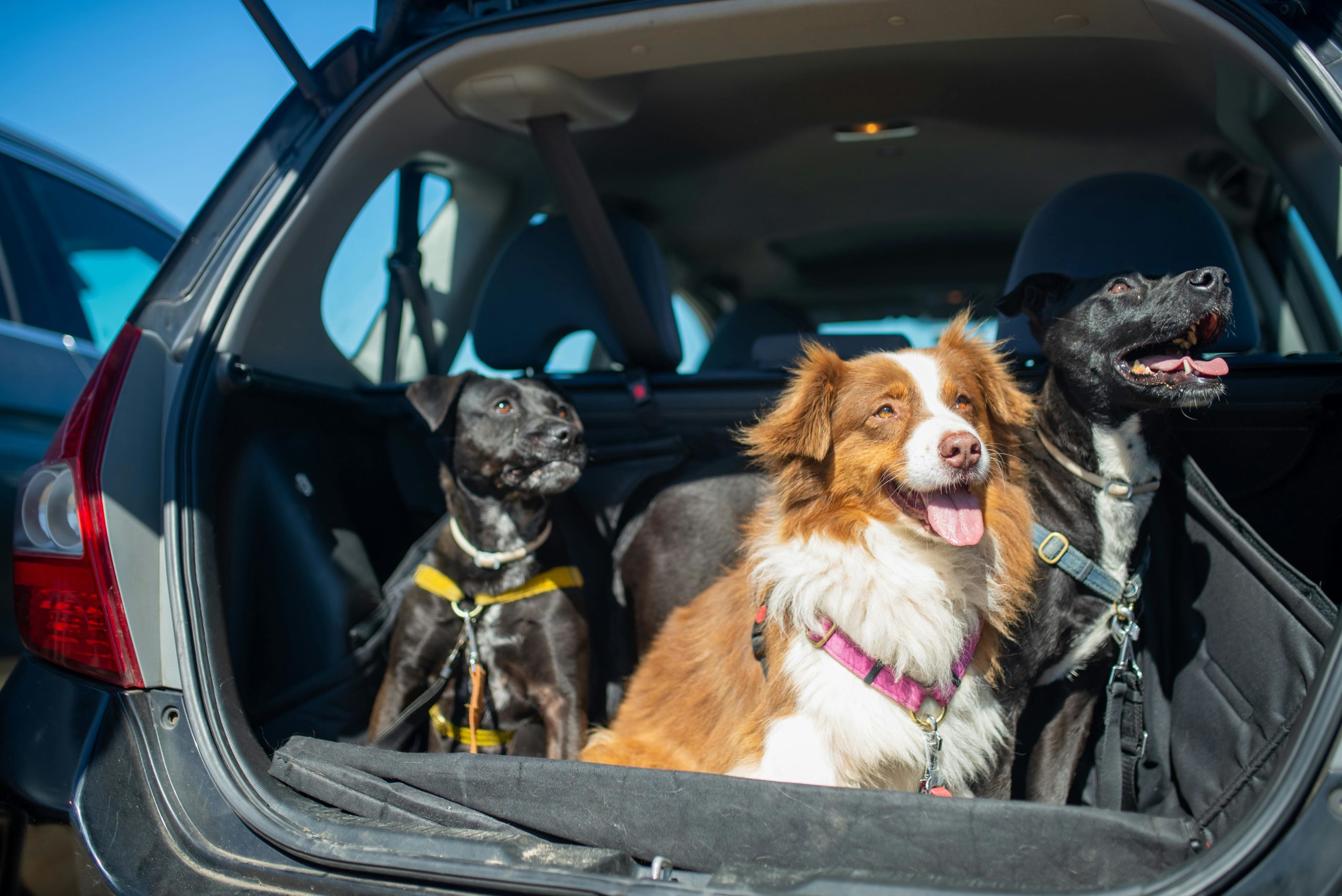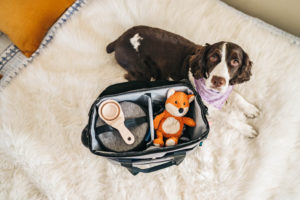Traveling with pets can be a delightful experience, turning an ordinary trip into a memorable adventure. However, it requires careful planning and preparation to ensure the safety and comfort of your furry friends. At Family Friends Veterinary Hospital, we believe that well-prepared trips can be enjoyable for both pets and their owners. Here’s a comprehensive guide to help you pack the essentials and ensure a safe journey with your pets.
Packing Essentials for Your Pet
1. Travel Crate or Carrier
A travel crate or carrier is crucial for your pet’s safety during the trip. It should be well-ventilated, sturdy, and large enough for your pet to stand, turn around, and lie down comfortably. Familiarize your pet with the crate before the trip to reduce anxiety.
2. Food and Water
Pack enough food to last the entire trip, along with some extra in case of delays. Bring your pet’s regular food to avoid stomach upsets. Don’t forget collapsible food and water bowls for easy storage and use.
3. Medications and First Aid Kit
If your pet is on any medication, ensure you have enough to last the trip, plus a few extra days’ worth. A pet first aid kit, including bandages, antiseptic wipes, tweezers, and any necessary prescriptions, is also essential.
4. Comfort Items
Bring along your pet’s favorite blanket, toys, and treats to make them feel at home. Familiar items can provide comfort and reduce stress during travel.
5. Identification and Documentation
Ensure your pet has proper identification tags with your contact information. Carry a copy of their medical records, including vaccination history, especially if you’re traveling across state or international borders.
6. Leash and Harness
A sturdy leash and harness are a must for bathroom breaks and exercise stops. Ensure they fit well to prevent escapes.
7. Waste Bags and Litter Supplies
For dogs, pack enough waste bags to clean up after them. For cats, bring a portable litter box and litter.
Travel Carriers and Restraint
Safety Tips for Traveling with Pets
1. Plan Your Route and Stops
Before hitting the road, plan your route and identify pet-friendly stops for bathroom breaks, exercise, and meals. Avoid leaving your pet in the car alone, especially in extreme weather conditions.
2. Secure Your Pet
Whether you’re traveling by car, plane, or train, ensure your pet is securely restrained. In cars, use a pet seat belt, harness, or crate. For air travel, check with the airline for specific pet travel requirements and crate specifications.
3. Maintain a Routine
Try to stick to your pet’s regular feeding and exercise schedule as much as possible. Familiar routines can help reduce anxiety and keep your pet comfortable.
4. Monitor Their Health
Keep an eye on your pet’s health throughout the trip. Look for signs of stress, dehydration, or discomfort. Ensure they stay hydrated, especially in warm weather.
5. Prepare for Emergencies
Research veterinary clinics and emergency hospitals along your route and at your destination. Having this information readily available can save valuable time in case of an emergency.
6. Travel Training
Gradually acclimate your pet to travel. Start with short trips to get them used to the car or carrier. Reward them with treats and praise to create positive associations with travel.
7. Know Pet Travel Regulations
If traveling internationally, check the pet travel regulations of your destination country. Some countries require specific vaccinations, health certificates, or quarantine periods.

Destination Considerations
1. Pet-Friendly Accommodations
Book pet-friendly accommodations in advance. Many hotels and vacation rentals welcome pets, but it’s essential to confirm their pet policy beforehand.
2. Outdoor Activities
Plan activities that your pet will enjoy. Hiking, beach trips, and outdoor parks can be great fun for pets. Ensure they are allowed in the areas you plan to visit and follow local leash laws and pet guidelines.
3. Local Hazards
Research potential hazards at your destination, such as local wildlife, poisonous plants, or extreme weather conditions. Knowing what to expect can help you keep your pet safe.
4. Research Veterinarians
Before traveling with your pet, it’s crucial to research emergency veterinary clinics at your destination. Knowing the locations and contact information of nearby emergency vets can save valuable time and ensure your pet receives prompt medical attention in case of an emergency.
Conclusion
Traveling with pets can be a joyful and rewarding experience with the right preparation and care. By packing the essentials and following safety tips, you can ensure a comfortable and safe journey for your furry companions. At Family Friends Veterinary Hospital, we’re here to help you with all your pet travel needs, from health certificates to travel tips. Safe travels and happy adventures with your beloved pets!





